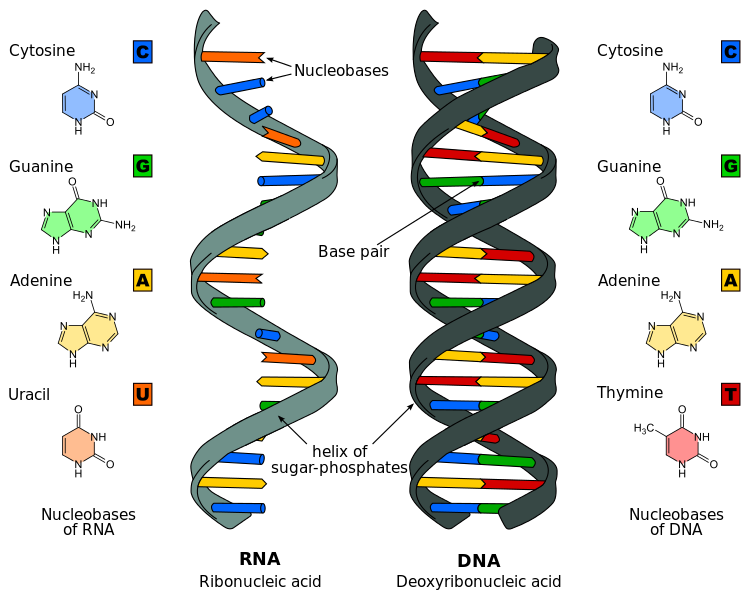How are RNA and DNA different?
2 Answers
DNA has a few major differences from RNA:
- DNA is a double helix, made of two, joined strands forming a structure like a twisted ladder. RNA is only a single strand and comes in a variety of shapes.
- DNA is almost always restricted to the interior of the nucleus but various forms of RNA can enter and leave the nucleus.
- DNA's sugar is deoxyribose while RNA's sugar is ribose (hence the reason for their names: DNA- deoxyribonucleic acid, RNA- ribonucleic acid).
- DNA has the bases adenine, cytosine, guanine, and thymine. RNA has the bases adenine, cytosine, guanine, and uracil.
- The molecules also differ in their functions. DNA serves as the master blueprint of proteins for the cell, while the various forms of RNA serve multiple purposes including helping protein synthesis and serving some enzymatic functions.
Here is a helpful image (source- Wikimedia Commons):

Sep 22, 2014
RNA and DNA are different both structurally and functionally.
In terms of structure the key differences are:
- A different sugar molecule occurs on the backbone of the molecule. RNA has R ibose, DNA has D eoxyribose.
- RNA uses the bases A, U, C and G . DNA uses the bases A, T, C, and G.
- RNA is often single-stranded, DNA is often double stranded. However, both can occur in either form.
Functionally:
- DNA is for long term storage of genetic information
- RNA has multiple functions. Most commonly we discuss messenger RNA (mRNA), but RNA also functions more like an enzyme in transfer RNA (tRNA) and ribosomal RNA (rRNA).
- Some viruses (like HIV) use RNA as their genomic storage.
- More recently, microRNA and short-interfering RNA have been identified as regulatory functions of RNA.



